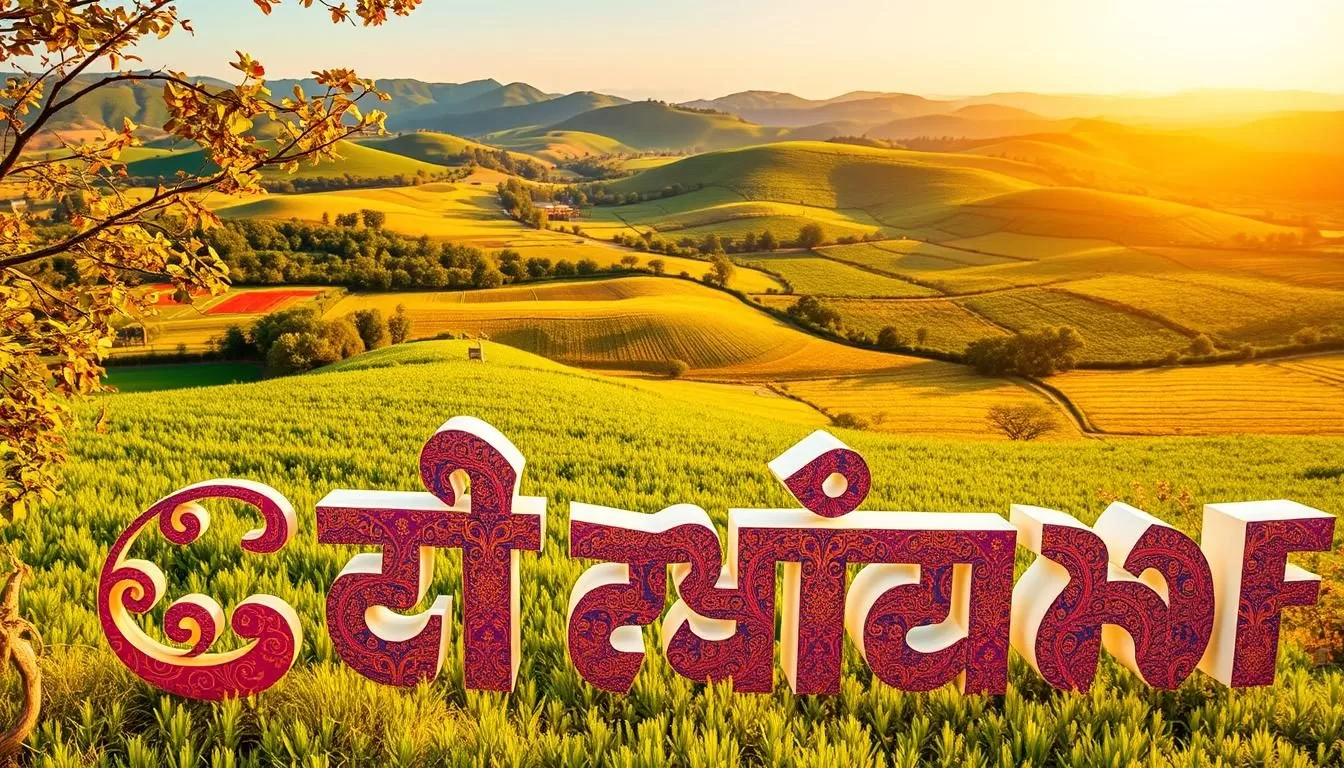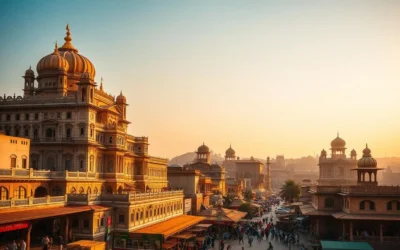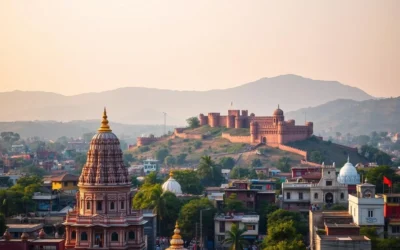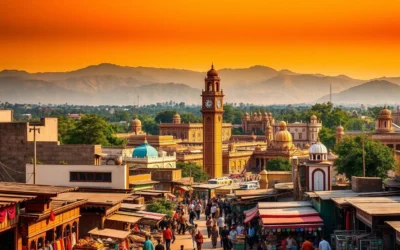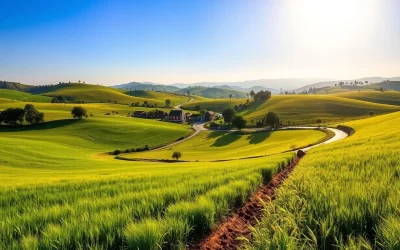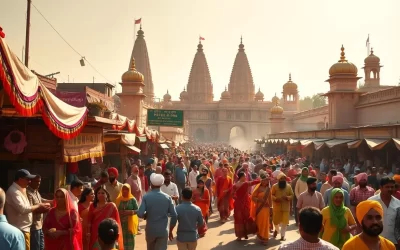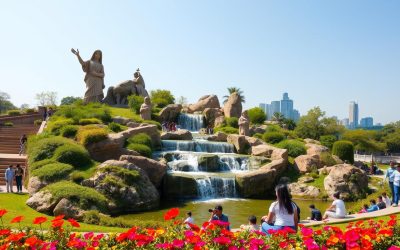✓ Accommodations ✓ Flights ✓ Rental Cars
You’re about to explore the rich linguistic landscape of Punjab, India, where the Punjabi language plays a vital role as the official language. With a history dating back to the second millennium, Punjabi is an Indo-Aryan language spoken by millions.
As you delve into this comprehensive guide, you’ll discover how Punjabi has shaped the region’s identity and learn about its significance as the 11th most popular language globally. You’ll also gain insights into the various scripts used for writing Punjabi, particularly the Gurmukhi script, and understand the linguistic diversity of this vibrant Indian state.
This guide is designed to help you appreciate the complex history, religious diversity, and cultural evolution reflected in the language spoken in Punjab.
The Linguistic Landscape of Punjab
As you explore Punjab, you’ll discover a complex linguistic tapestry woven from the threads of different languages and dialects. The region’s strategic location has made it a crossroads of various empires and civilizations, significantly influencing its linguistic diversity.
The Origin of Punjab’s Name
The name “Punjab” is derived from the Persian words “panj” meaning five and “ab” meaning water or river, referring to the five rivers that flow through the region. This etymology highlights the geographical significance of Punjab, which has been a crucial factor in shaping its cultural and linguistic identity. The region’s language has been influenced by its history and the various cultures that have interacted with it.
Historical Context of Languages in Punjab
Punjabi has evolved through three distinct stages: Old Punjabi (10th-16th century), Medieval Punjabi (16th-19th century), and Modern Punjabi (19th century to present). This evolution reflects the region’s complex history, including the influence of different languages such as Sanskrit, Persian, Arabic, and English. The partition of India and Pakistan in 1947 had a significant impact on the linguistic landscape, resulting in different script preferences in Indian and Pakistani Punjab.
| Period | Characteristics | Influences |
|---|---|---|
| Old Punjabi (10th-16th century) | Early form of Punjabi language | Sanskrit, local dialects |
| Medieval Punjabi (16th-19th century) | Development of literary Punjabi | Persian, Arabic |
| Modern Punjabi (19th century to present) | Contemporary Punjabi, influenced by global languages | English, other global languages |
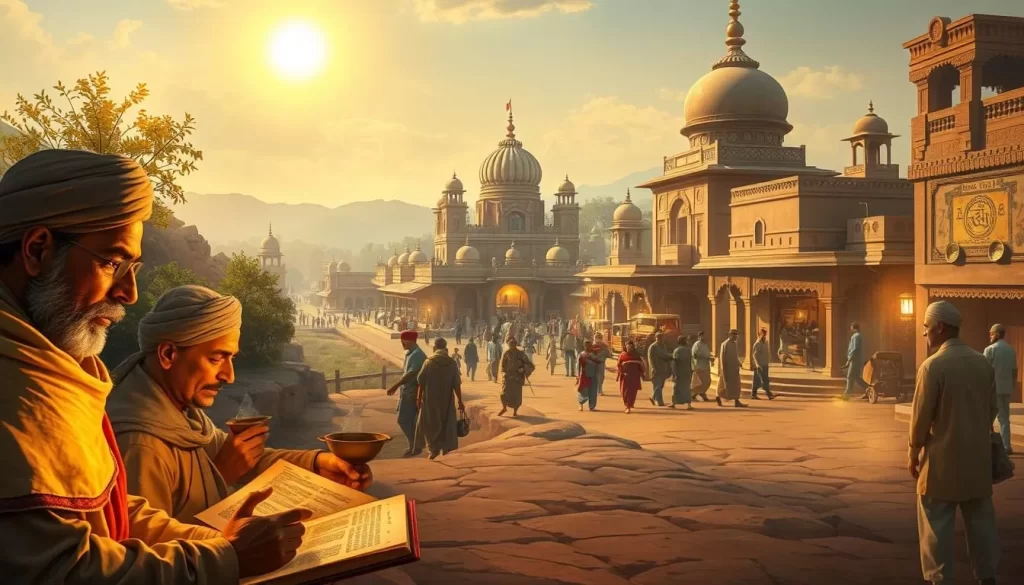
The historical context and geographical location of Punjab have contributed to its rich linguistic diversity, with the region being home to various languages and dialects. The division between India and Pakistan has also led to differences in script, with Gurmukhi used in Indian Punjab and Shahmukhi in Pakistani Punjab, highlighting the complex relationship between language and geopolitical boundaries, such as those between India Pakistan.
Punjabi: The Official Language of Punjab, India
As you explore the linguistic landscape of Punjab, India, you’ll discover that Punjabi is not only the official language but also a vital part of the region’s cultural identity. With a rich history and significant cultural importance, Punjabi plays a central role in the daily lives of the people of Punjab.
Status and Recognition of Punjabi
Punjabi is recognized as one of the official languages of India and holds a special status in the state of Punjab. As of 2015, it was estimated that nearly 50 million people speak Punjabi around the world, with some reports claiming up to 120 million speakers. This significant number underscores the language’s importance both within India and globally.
Punjabi’s Global Reach and Importance
Punjabi’s influence extends far beyond Punjab, with significant Punjabi-speaking populations found in countries like Canada, the United Kingdom, the United States, and Australia. In Canada, for instance, Punjabi is the third-largest linguistic group, highlighting its global reach. The language has also gained international recognition, with Punjabi literature, music, and cinema contributing to its cultural significance. Today, Punjabi is taught in universities worldwide and is supported by various cultural institutions.
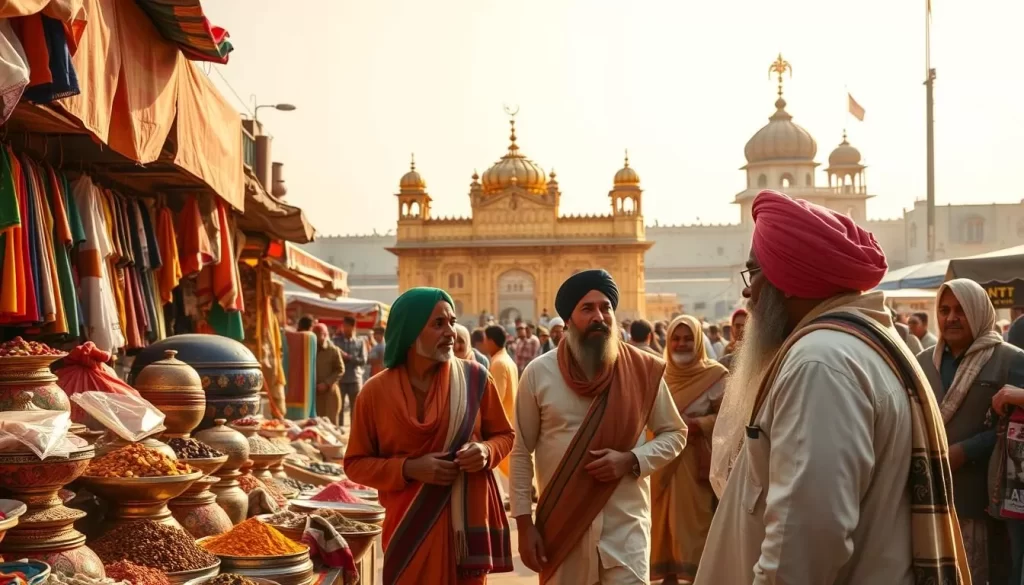
| Language | Speakers (in millions) | Global Ranking |
|---|---|---|
| Punjabi | 50-120 | 11th |
| Other Indian Languages | Varies | – |
The Gurmukhi Script: Writing Punjabi in India
The Gurmukhi script is fundamental to writing Punjabi, especially among Sikhs in India. It’s not just a means of communication but also a significant part of Sikh cultural and religious identity.
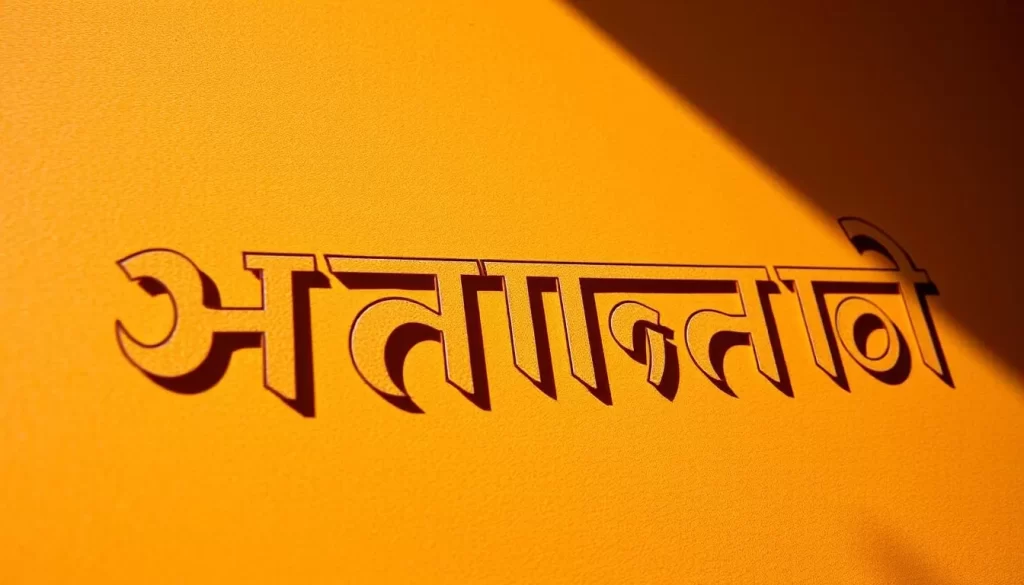
Origins and Development
The Gurmukhi script was developed from the Brahmi script, and its evolution is closely tied to the history of Sikhism. It was designed to be distinct and to facilitate the writing of Punjabi with clarity. Over time, Gurmukhi has become the preferred script for Sikhs to record their religious texts and literature.
Distinctive Features
Gurmukhi has several distinctive features that make it unique. It consists of 35 consonants and 9 vowel symbols, and is written from left to right. Unlike the Urdu script used in Pakistani Punjab, which is based on the Perso-Arabic writing system and written from right to left, Gurmukhi’s direction and structure are well-suited for representing the tonal features of Punjabi written in this script.
Understanding Gurmukhi is essential for appreciating the nuances of Punjabi, especially when comparing it to the Shahmukhi (Urdu) script used in Pakistani Punjab. While both scripts are used to write Punjabi, they have distinct characteristics that reflect the cultural and historical contexts in which they are used.
Other Languages Spoken in Punjab, India
As you explore the linguistic landscape of Punjab, India, you’ll discover a rich tapestry of languages beyond the official language. The state’s cultural diversity is reflected in the various languages spoken by its inhabitants.
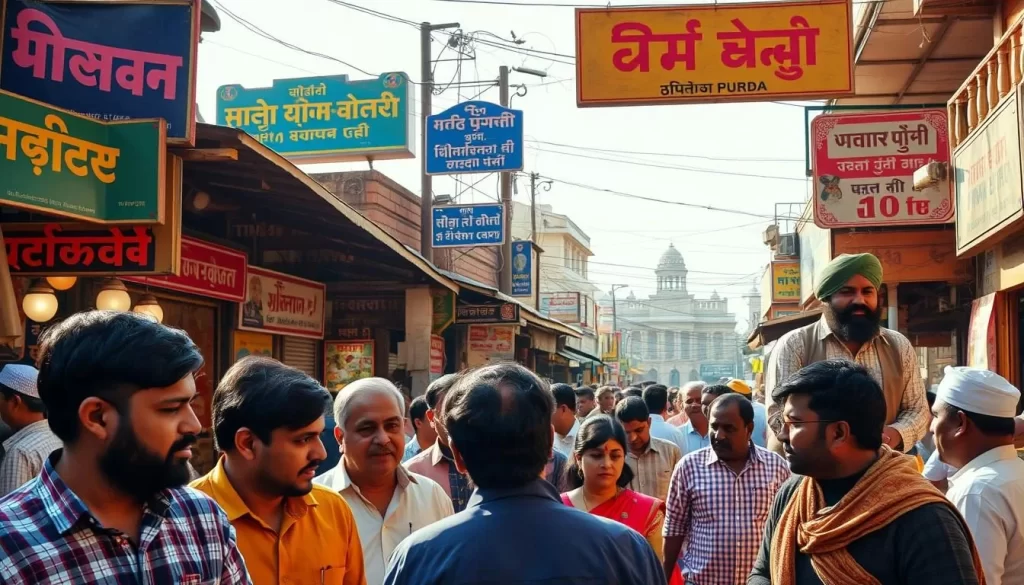
Hindi and English Usage
In Punjab, India, Hindi and English play significant roles, particularly in official and educational contexts. English is widely used in government offices, educational institutions, and business settings, serving as a link language for communication across different regions.
Hindi, being one of the official languages of India, is also widely understood and used, especially in formal and administrative settings.
Regional Minority Languages
Punjab is home to several regional minority languages, including Powadhi, Pahari, Kangri, Dogri, and others. These languages are often spoken in specific regions, such as the hilly areas bordering Himachal Pradesh, where geographical features have helped preserve linguistic diversity.
The regional minority languages not only add to the cultural richness of Indian Punjab but also reflect the historical and cultural heritage of their respective communities.
Punjabi Dialects Across the Region
As you explore the Punjab region, you’ll discover a multitude of Punjabi dialects that showcase its linguistic richness. Punjabi, classified as a Northwest Indic language, has evolved significantly over time, with its development categorized into three stages: Old Punjabi, Medieval Punjabi, and Modern Punjabi.
The diverse dialects of Punjabi reflect the geographical and cultural diversity of the Punjab region. You can explore these dialects to understand the region’s history and cultural nuances.
Majhi: The Standard Dialect
Majhi is considered the standard dialect of Punjabi. It is widely understood and used in official contexts. Majhi’s prominence is due to its use in educational institutions and media.
Malwai: The Folk Music Dialect
Malwai is a dialect closely associated with the folk music of the Malwa region. It has a rich cultural heritage and is known for its distinctive musical traditions.
Doabi and Other Prominent Dialects
Doabi, spoken in the Doaba region, is notable for its unique vocabulary and has been influenced by migration patterns. Other dialects include Powadhi, Puadhi, and Jhangochi, each reflecting the geographical diversity of the Punjab region.
| Dialect | Region | Characteristics |
|---|---|---|
| Majhi | Central Punjab | Standard dialect, widely understood |
| Malwai | Malwa region | Rich in folk music traditions |
| Doabi | Doaba region | Distinctive vocabulary, influenced by migration |
Conclusion: Preserving Punjab, India’s Official and Widely Spoken Languages
Having delved into the world of Punjabi and other languages in Punjab, you’ve uncovered the intricate connections between language, culture, and identity. As the official language of Indian Punjab, Punjabi plays a vital role in the region’s cultural heritage.
The preservation of Punjabi, an Indo-Aryan language, and other languages spoken in Punjab is crucial for maintaining the region’s rich literary and artistic traditions. With millions of speakers across India, Pakistan, and globally, Punjabi stands as the 11th most widely spoken language in the world.
As you’ve learned, the Indian state of Punjab continues to promote its linguistic heritage, ensuring the language remains vibrant and relevant.
The above is subject to change.
Check back often to TRAVEL.COM for the latest travel tips and deals.
